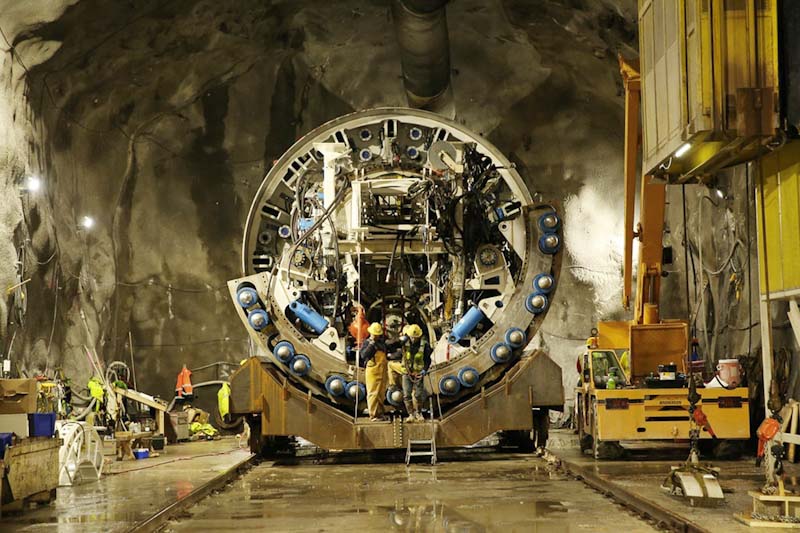NYC DEP Delays Last Phase of Repairs To Delaware Aqueduct to October 2024
NEW YORK—The New York City Department of Environmental Protection announced late last month a schedule change for planned work on the Delaware Aqueduct, the world’s longest tunnel, with the major work completing the project delayed one year. The project is now scheduled to begin October 2024.
The project, which calls for shutting down a portion of the aqueduct in order to attach a bypass tunnel under the Hudson River, was scheduled to begin in October of this year and last up to eight months. The shift in schedule was necessary to allow for additional pumps, as well as related drainage infrastructure and electrical support, to be installed to keep the construction zone dry and ensure worker safety during this complex repair of decades-old leaks.
“This is the largest-ever capital repair project in the history of the city’s water supply and worker safety is paramount for DEP,” said DEP Commissioner Rohit T. Aggarwala. “This schedule change is being done to ensure that the men and

women working 700-feet underground will be safe as they help us protect New York City’s high-quality drinking water for generations to come. This schedule change will in no way impact the safety or supply of New York City’s drinking water.”
DEP officials stated the agency has been working closely with Hudson Valley municipalities that rely on the Delaware Aqueduct for their water supplies to activate backup plans during the temporary shutdown as well as working with the U.S. Geological Survey to continually monitor groundwater levels in communities where the Delaware Aqueduct leaks are located.
In March, the aqueduct was temporarily shut down and partially drained for two weeks as part of a planned test—the first such shutdown and draining of the aqueduct in 70 years. Data collected during that shutdown showed that groundwater was infiltrating the aqueduct faster than originally projected when the tunnel was not at full capacity. To account for this additional infiltration, and out of an abundance of caution for the safety workers, DEP will be securing and installing additional equipment which will push back the start of the full shutdown by one year.
While operations of the water supply system as a whole have been adjusted in anticipation of an eight-month shutdown this October, DEP will now resume normal operations, including routine downstream releases from reservoirs.
In 2010, New York City announced a $1-billion plan to repair the aqueduct by connecting a 2.5-mile-long bypass tunnel around known leaks discovered in the 1990s—one in the town of Newburgh, the other in the Ulster County town of Wawarsing. The new bypass, being connected 700 feet beneath the Hudson River, is the first tunnel built under the Hudson River since 1957, when the south tube of the Lincoln Tunnel was completed.
Since 1992, DEP has continuously tested and monitored the leaks, which can release upwards of 35 million gallons per day. Nearly all of the water escaping the leaks happens near the Hudson River in Newburgh.
The 85-mile-long Delaware Aqueduct delivers about half of New York City’s water supply—typically about 600 million gallons a day—using only gravity to carry the water from four Catskill Mountain region reservoirs. The complimentary Catskill Aqueduct provides water to the city from two reservoirs in the eastern Catskills which will be more heavily relied upon during the Delaware Aqueduct shutdowns.
The Delaware Aqueduct was put into service in 1944 when New York City Mayor Fiorello H. La Guardia opened a set of emergency gates to channel the Rondout Creek directly into the new aqueduct.
